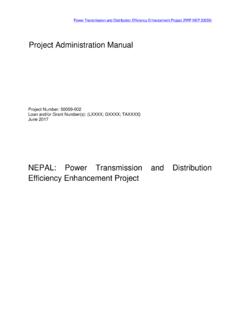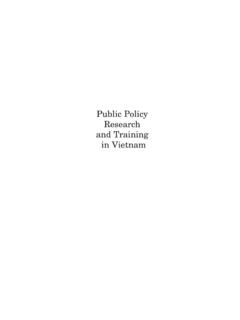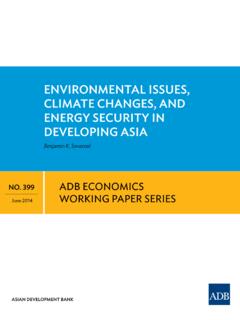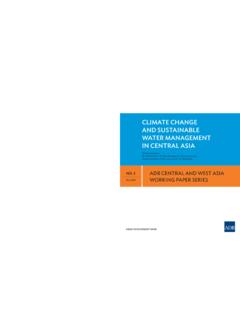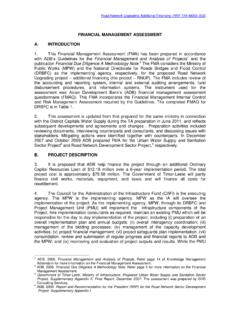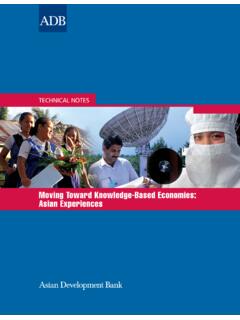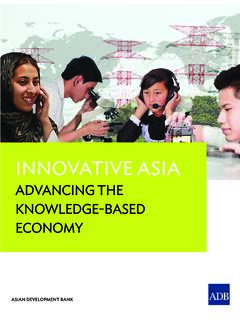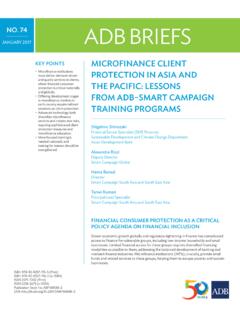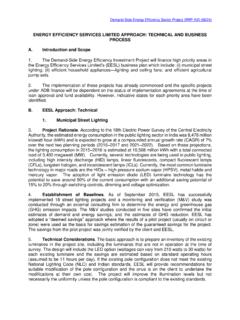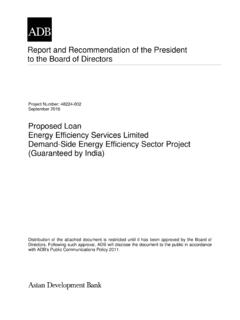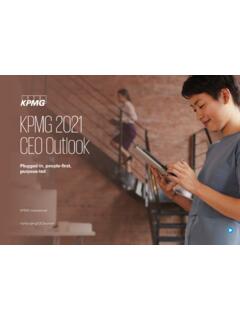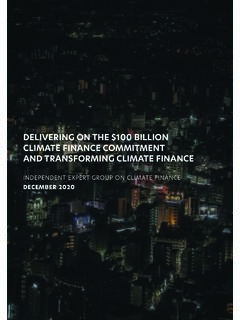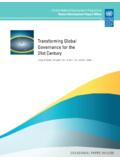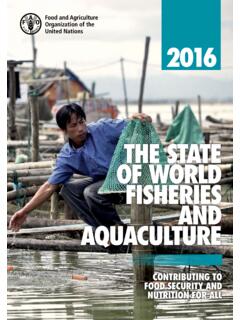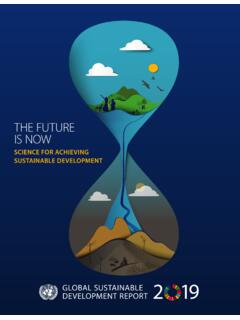Transcription of Asia 2050: Realizing the Asian Century: Executive Summary
1 ASIA2050 Realizing the Asian CenturyExecutiveSummaryAsia 2050: Realizing the Asian CenturyExecutive SummaryAsia is in the middle of a historic transformation. If it continues to follow its recent trajec-tory, by 2050 its per capita income could rise sixfold in purchasing power parity (PPP) terms to reach Europe s levels today. It would make some 3 billion additional Asians affluent by current standards. By nearly doubling its share of global gross domestic product (GDP) to 52 percent by 2050, Asia would regain the dominant economic position it held some 300 years ago, before the industrial revolution (Figure 1).
2 But Asia s rise is by no means preordained. Although this outcome, premised on Asia s major economies sustaining their present growth momentum, is promising, it does not mean that the path ahead is easy or requires just doing more of the same. Indeed, success will require a differ-ent pattern of growth and resolution of a broad array of politically difficult issues over a long period. Source: Maddison (1700 1950) (2007); Centennial Group International estimates (1951 2050) (2011). Data for 1750 1790 are PPP and data for 1991 2050 are in market s share of global GDP, 1700 2050 Figure10%10%20%30%40%50%60%70%1700187019 501980201020302050% of global GDP4 ASIA 2050To achieve this promising outcome Asia s leaders will have to manage multiple risks and challenges, particularly:t Increasing inequality within countries, which could undermine social cohesion and stability.
3 T For some countries, the risk of getting caught in the Middle Income Trap (Box 1), for a host of domestic economic, social, and political Intense competition for finite natural resources, as newly affluent Asians aspire to higher standards of Rising income disparities across countries, which could destabilize the global warming and climate change, which could threaten agricultural production, coastal populations, and numerous major urban areas. t Poor governance and weak institutional capacity, faced by almost all challenges are not mutually exclusive.
4 They can affect one another and exacerbate existing tensions and conflicts, or even create new pressures that could threaten Asia s growth, stability, and book postulates two scenarios of Asia s future growth trajectory: the Asian Century and the Middle Income Trap. These scenarios are only two possibilities of how Asia s future may unfold. They have a dual objective: to draw attention to the longer-term implications of the broad trends and to ask what-if questions. The Middle Income Trap is illustrated in the figure, which plots per capita incomes of three middle-income countries over 1975 2005.
5 In a steadily growing economy per capita GDP rises continuously the experience of the Republic of Korea. But many middle-income countries do not follow this pattern. Instead, they have bursts of growth followed by periods of stagnation or even decline, or are stuck at low growth are caught in the Middle Income Trap unable to compete with low-income, low-wage economies in manufactured exports and with advanced economies in high-skill innovations. Put another way, such countriescannot make a timely transition from resource-driven growth, with low-cost labor and capital, to productivity-driven Middle Income Trap.
6 Unable to competeBox103000600090001200015000180002 005200019951990198519801975 GDP per capita ($)BrazilCaught in the middle income trapAvoiding the middle income trapSouth AfricaRepublic of Korea5 Executive SUMMARYM akings of the Asian CenturyThe Asian Century scenario extends Asia s past success into the future, putting it on the cusp of a historic transformation. It assumes that Asian economies can maintain their momentum for another 40 years and adapt to the shifting global economic and technological environment by continually recreating their comparative advantages.
7 In this scenario, Asia s GDP (at market exchange rates) increases from $17 trillion in 2010 to $174 trillion in 2050, or half of global GDP, similar to its share of the global population. Seven economies would lead Asia s march to prosper-ity (Box 2). With a per capita GDP of $40,800 (PPP), Asia in 2050 would have incomes similar to Europe s today. It would have no poor countries (those with average per capita GDP of less than $1,000), compared with eight today. The results of falling into the Middle Income Trap are outlined further at three levelsIn its march toward the Asian Century, the region must tackle daunting policy, institutional, and governance challenges.
8 Given widely varying country conditions, the precise actions and their timing must vary. Still, it is possible to draw the contours of the major changes necessary for the region along three dimensions: national strategic and policy action; collective regional action to bridge the national and global agendas; and Asia s interactions with the global community (Figure 2). The ability of countries to realize the promise of the Asian Century will be determined by their success in these three action agendaSeven overarching intergenerational issues require national action throughout the region.
9 Asia s march to prosperity will be led by seven economies, two of them already developed and six fast growing middle income converging economies: PRC, India, Indonesia, Japan, Republic of Korea, Thailand and Malaysia. These seven economies had a combined total population of billion (78 percent of total Asia) and GDP of $ trillion (87 percent of Asia) in 2010. Under the Asian Century scenario, their share of population by 2050 would be 75 percent and their GDP would be 90 percent of Asia. They alone will account for 45 percent of global GDP.
10 Their average per capita income would be $45,800 (in PPP) compared with $37,300 for the world as a whole. Between 2010 and 2050, these seven economies would account for as much as 91 percent of total GDP growth in Asia and of almost 53 percent of global GDP growth. They will thus be the engines of not only Asia s economy but also the global engines of the Asian Century are the Asia-7 economiesBox26 ASIA 2050 Growth and inclusion. Growth and inclusion need not be mutually exclusive; indeed they can be mutually reinforcing. To sustain growth over the long-term, almost all Asian countries must give much higher priority to inclusion and reducing inequalities rich/poor, rural/urban, literate/illiterate, and along gender and ethnic lines.
